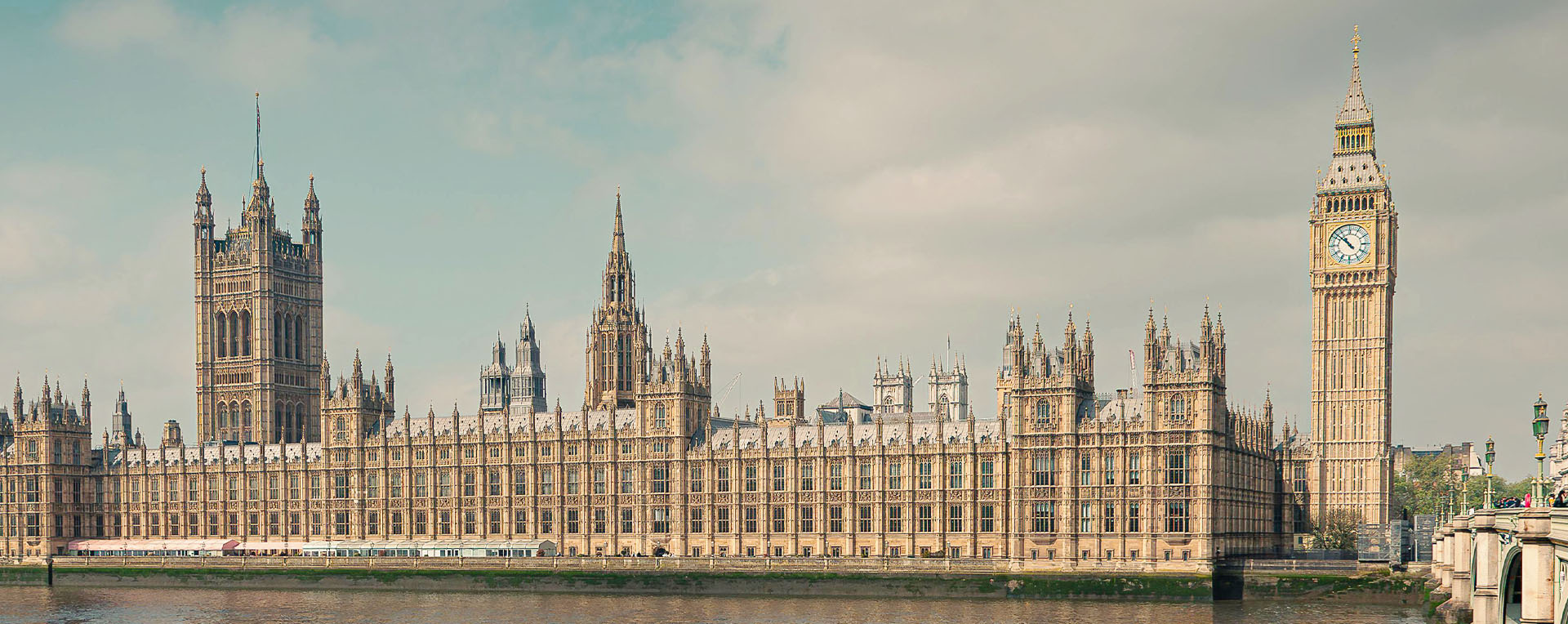The Government is running a two-part consultation on measures designed to support housing delivery in London:
-
the design and administration of a proposed time-limited or ‘emergency’ relief from Borough Community Infrastructure Levy (CIL) for certain developments in Greater London, which deliver a minimum level of affordable housing; and
-
extending the London Mayor’s development management call-in powers by
-
adding applications for development of over 1,000 sqm, within Green Belt or Metropolitan Open Land, to applications of potential strategic importance (PSI); and
-
creating a new application of potential strategic importance category, for development of 50 or more homes where boroughs are minded to refuse.
These would be legislative changes.
Simultaneously, the Mayor of London is consulting on draft ‘Support for Housebuilding’ London Plan Guidance, which proposes to comprise:
-
Time-limited changes to cycle parking requirements
-
Withdrawal of some housing design guidance
-
A ‘time-limited planning route’ for the delivery of affordable housing
These would be policy changes.
Both consultations close on 22nd January 2026.
The GLA has also published updated Accelerated Funding Guidance
[1].
The consultations follow the Government’s 23rd October 2025 ‘Support for housebuilding in London’ policy paper and Housing Delivery Written Ministerial Statement, which were trailers for these consultations. That joint Government and Mayoral announcement was analysed by Amy Jones and Ben Kelway in our
Emergency measures to unlock housebuilding in The Capital blog, where they also explained the rationale for the (then) proposals. The proposals are essentially unchanged, so the context for the proposals, as trailed, and our analysis of them remain relevant. The Government and the Mayor have detailed their reasoning behind the proposed package of support measures for housebuilding, particularly in the Mayor’s Background Information for London Plan Guidance, which are not set out or scrutinised here.
While the proposals are badged as emergency measures they have been much trailed and are still not expected soon, with the CIL Regulations, which are a key part of these proposals simply due in the “first part of 2026”.
This blog focuses on the proposed legislative changes to CIL in London and on the new time limited planning route, aiming to draw together the various pre-requisites for CIL relief and to summarise the other wide-ranging proposals, which are spread across 74 pages of consultations and a background information note.
The Government invites comment and alternative approaches on most if not all elements of the consultation, but for simplicity, I have assumed all elements of the revised regulations as proposed will emerge as currently intended.
The time-limited planning route for affordable housing delivery – part of the Mayor’s consultation
Currently, the London Plan has a Threshold Approach to establishing which route a planning application for major residential development takes for viability assessment. The fast track route (no viability assessment at application stage) and viability tested route would continue to apply (
see policy H5[2]), with a ‘time limited planning route’ introduced to operate in parallel. The time-limited planning route would allow certain residential development applications to not include an upfront viability assessment. Schemes eligible for the time limited planning route would be eligible for grant funding (excluding the first 10% of homes).
This new, temporary route would be relevant to CIL relief, because a pre-requisite of CIL relief is that developers have sought, where eligible, grant funding “to maintain or increase affordable housing in existing s106 agreements where needed, via the time-limited planning route being consulted on by the Mayor of London”.
Eligibility for the time-limited planning route
The draft LPG says that to be eligible for the time-limited planning route “Residential developments must meet or exceed the following time limited adjusted affordable housing thresholds”:
|
Nature of site
|
Affordable housing by habitable room
|
|
Private land
|
20%
|
|
Public land
|
35%
|
|
Industrial land where industrial floorspace capacity has not been re-provided
|
35%
|
|
Industrial land where industrial floorspace capacity has been re-provided
|
20%
|
|
Utilities sites where evidence of substantial decontamination, enabling and remediation costs is provided
|
20%
|
The affordable housing must consist of 60% social rent and 40% intermediate tenure. Build to Rent schemes can provide at least 30 per cent at or below London Living Rent levels or Key Worker Living Rent and 70% genuinely affordable rent.
Sites on or released from Green Belt (including grey belt sites), estate regeneration schemes and other schemes demolishing affordable housing, Purpose Built Student Accommodation (PBSA) or Co-living schemes comprising more than 50% or more of the total scheme’s residential floorspace would not be eligible for the time limited route. PBSA and Co-living schemes comprising less than 50% of a residential scheme will be eligible only if they meet PBSA and Co-living thresholds and requirements
[3].
For outline planning proposals the gross external area (GEA) of the PBSA and/or Co-living shown on the parameter plan will be used to assess whether these elements are 50% of the residential part of the scheme or not..
The time-limited planning route will end on the earlier of 31st March 2028 or the publication of the revised London Plan; planning applications on this route will need to have been approved – i.e. the decision notice issued - by the deadline. The consultation says that LPAs should consider granting permissions that would expire in less than three years, to encourage delivery.
As announced in October, if eligible housing schemes progress to completion of their first floor level by the end of March 2030, the requirements for a late stage review will be waived. For larger housing schemes 200 units must have been built by that date, unless it is demonstrated that the delay was caused by the Building Safety Regulator.
A gain-share review mechanism will be applicable where construction on the scheme has not reached that point by 31 March 2030. If this is triggered, it would allow for a review of scheme viability to determine whether any additional affordable housing can be provided if viability improves.
Borough CIL relief – part of the Government’s consultation
The Government’s intention is “to make qualifying residential development viable and so be built-out, which would not otherwise occur but for the relief”. Emergency relief from Mayoral CIL is not proposed.
Changes to the CIL legislation would be introduced by the agreement of both Houses of Parliament (as is the case for CIL and the Fee Regulations), in 2026. Therefore, change is not imminent – the Government is aiming for as soon as possible in the first half of 2026.
The proposed level of relief
The starting point is that at least 20% of the housing proposed should be affordable housing, which reflects the proposed time-limited planning route. The Government proposes that where 20% affordable housing is to be delivered and all other qualifying criteria are met, LPAs must grant CIL relief of 50 per cent.
The Government also proposes higher relief where additional affordable housing is delivered over and above 20 per cent, rising “linearly up to 80 per cent relief for 35 per cent affordable housing delivery”. See Figure 1
| |
|
|
| |
Borough CIL relief criteria
|
|
| |
|
|
| |
|
|
| |
To obtain Borough CIL relief all of the following criteria must be met:
-
The development is for residential development other than student and co-living accommodation
-
The site is not on “excluded land”, i.e. Green Belt, Metropolitan Open Land (MOL) or land which is a park, recreation ground, allotment, golf course or other locally designated open space, so that the emergency relief is targeted “predominantly” on previously developed land (the consultation does not mention sites that comprise some excluded land)
-
Borough CIL liability exceeds £500,000 for the whole development within the red line boundary, after relief - i.e. the Borough CIL liability of an unphased planning permission or the sum of any phases within a phased permission must amount to more than £500,000 after any permanently available relief has been taken into account
-
The section 106 agreement secures at least 20 per cent affordable housing measured by habitable room, with a minimum of 60 per cent Social Rent
-
Applicants with unimplemented planning permissions will be expected, where eligible, to seek grant to maintain or increase affordable housing in existing s106 agreements where needed, via the time-limited planning route being consulted on by the Mayor of London. The new emergency CIL relief should then be applied for which would reflect the level of affordable housing set out in the s106 agreement
-
Emergency CIL relief application fee of £25,000 to be paid
-
Applicant to give GLA consent to share information on the project which was used to determine the grant provision with the LPA considering the CIL relief request
-
The financial impact that paying CIL in full would have on the viability of the development must be evidenced – this is not open book, rather a summary appraisal of a residual valuation of the proposed scheme. Borough CIL would be reduced based on the amount of relief being applied for. What the summary should include, and the appraisal process that would follow, is described in the consultation
-
If the appraisal demonstrates that granting the CIL relief would make the development viable, and is accompanied by a statutory declaration (and/or other required statement/information under the CIL regs), relief should be granted by the LPA
-
Developer is to make a statutory declaration that the information underpinning the valuation is a true and fair assessment of the proposed development’s viability [4]
-
The chargeable development - each phase for a phased permission, the permission for unphased permissions - must commence after the relief is in place and before the end of 2028. For phased development this criterion applies on phase basis, so some phases of a development might not be eligible, as they have already commenced, while others would be eligible
|
|
| |
|
|
Regarding the last criterion above, the Government says:
“To support this, additional limits may be introduced to ensure the targeted and time-limited nature of the emergency relief cannot be undermined through certain forms of structuring and phasing, particularly where related to part outline or fully outline applications. These limits would be designed to provide a sufficient level of protection against boundary-pushing”.
The emergency CIL Relief will be granted on the residual amount once other reliefs (e.g. social housing relief) are taken into account.
Clawback
The Government proposes “clawback provisions tied to:
- build-out, so a scheme could not benefit from relief by doing nothing more than nominally commencing; and
- affordable homes, so a scheme cannot qualify for a level of relief based on delivering an amount of affordable housing which is subsequently reduced”.
Unintended consequences and potential omissions
As is often the case, the questions posed in the consultation identify where the Government has concerns about unforeseen circumstances or potential failure to meet policy intent.
For example, question 6 asks whether the application and level of the proposed borough-level CIL liability threshold, would have, among other things, significant negative implications for SME builders.
And question 7 asks whether applying the threshold to a development as a whole would present challenges for phased developments where each phase is a separate chargeable development for CIL purposes and whether a lower threshold should apply for phased developments.
Proposed changes to the Mayor’s call in powers – part of the Government’s consultation
The consultation proposes these changes to the Mayor’s powers:
-
a new PSI category (PSI being applications for planning permission of potential strategic importance for London) and streamlined procedure for residential development of 50 or more homes if the development is not included in other PSI categories, where the Mayor will have the power to call in the application if the local planning authority is minded to refuse development; and
-
a new power for the Mayor to call in applications for development of a building of more than 1,000 square metres on Green Belt or Metropolitan Open Land.
The Mayor does not want the 50+ home schemes to be subject to the Stage 1 referral process, which is why PSI category 1A, for 150 homes plus, is not being extended. Instead, a new referral category is proposed to be introduced.
The Mayor would be notified that the LPA has a 50+ home application, but does not have a duty to respond, so no Stage 1 referral process.
If the LPA is minded to approve, there is no further action.
If the LPA intends to refuse the application, a modified version of the Stage 2 referral process is proposed as follows:
-
The LPA provides the Mayor with the reasons for refusal, representations received and a copy of the officer report, including details of proposed conditions and obligations if the application had been recommended for approval by Members; and
-
Mayor has 21 days from receipt of the above to decide whether to call in or not. The Mayor must only call-in if the Mayor considers that the development (or any of the issues raised by it) would have an impact on the implementation of the spatial development strategy (the London Plan); and there are sound planning reasons for the intervention
The consultation says that, since 2021, 207 more applications would have been PSI applications under the proposed 50 homes category, of which 33 were refused and 19 were appealed, “some of which” were upheld.
Landstack data indicates that, in the year to October 2025, 30 additional applications would have been capable of call-in, but only if the LPA had been minded to refuse them and only if they met the tests at 2. above.
The Mayor only intervenes in a very small proportion of applications, and it remains to be seen whether alongside these expanded powers the Mayor would become more interventionist - and whether the justification would exist should he want to be.
‘Support for Housebuilding’ London Plan Guidance – part of the Mayor’s consultation
The Mayor of London is consulting on draft ‘Support for Housebuilding’ London Plan Guidance
[5], which proposes:
-
Time-limited changes to cycle parking requirements
-
Withdrawal of some housing design guidance
-
A ‘time-limited planning route’ for the delivery of affordable housing (addressed earlier in this blog)
Temporary cycle parking standards
The short term changes to long-stay cycle parking standards are set out at section 2 of the draft guidance. The Background Information to the draft LPG is discusses the context for change and provides the existing standards, which will be reverted to. In essence, the draft standards place each LPA in a cycle standards band and provide guidance on the required provision of long-stay cycle parking per bedroom within each band. Guidance on the quality of cycle parking is also provided. The temporary guidance on cycle parking applies until the earlier of 31 March 2028 or the publication of the revised London Plan.
Withdrawal of housing design standards
Three housing design standards set out in the Housing Design Standards London Plan Guidance 2023 are proposed to be permanently withdrawn:
-
The standard requiring that new homes be dual aspect unless exceptional circumstances make it impractical or undesirable;
-
The standard required that the number of homes accessed by a core should not exceed eight per floor; and
-
A standard that repeats the cycle parking requirements in the London Plan
Commentary
The commitment by the new Secretary of State - made in October just 6 weeks from his appointment - to a set of unprecedented and considered interventions remains good news. It has already been discussed in detail and soft tested with stakeholders.
My colleagues’ observations regarding
whether the proposals will have the desired effect and how the Government could go further remain largely valid now that we know the detail. In particular:
“The elephant in the room is clearly the challenge of demand and the fact that a factor undermining viability of many schemes is the challenge of selling units in the market since the end of Help to Buy and with no alternative Government support for first time buyers. Absent that demand-side support, it must remain doubtful that the Government’s proposals are sufficient to bring housing delivery back to previous levels, let alone the more ambitious targets for which the next London Plan must aim”.
The need to amend the Housing Standards LPG reflect highly detailed, non-strategic policy and guidance that the Mayor issues. October’s policy note and trailer for these consultations made welcome reference to the significant policy layering in London. It said that the Mayor “is clear” that, in the next London Plan, “there should be a streamlining of requirements on developers and a reduction in the layering of policy across the London Plan and borough-level local plans” – reflecting the approach anticipated in the forthcoming national decision making policies, to be consulted at the end of 2025 and into 2026.
The very welcome proposed CIL relief appears to be a potentially onerous process – reflected in the high assessment fee - and applicable to only a limited number of major residential schemes. The £25,000 CIL relief application fee will be made to local planning authorities which are likely to scrutinise compliance with regulations and guidance, as they will not wish to part with anticipated CIL funding easily. They will be dealing with Regulations, so in theory there wouldn’t be grey areas, but the need for sworn statements and use of the time limited route for affordable housing viability assessment adds an instant greyness.
LPA CIL teams have busy and complex caseloads in the same way that development management officers do, so the fee may not be able to fund an officer, in the same way that pre-application requests and PPAs are not always easy to resource.
In October’s Written Ministerial Statement regarding these proposals, the Government said it intends to clarify the use of Section 73 applications so they can no longer be used to reconsider a scheme’s viability or planning obligations, which will be done through an update to Planning Practice Guidance “in due course” and through national decision making policies, which are due to be consulted on by the end of the year. This seems to me another potential opportunity blocked as another one opens.
However, the pro-growth message from Government remains clear, and a some potential stumbling blocks should not and are unlikely to dissuade the residential development sector from engaging with these significant proposed changes. As mentioned above, the Government is seeking input and potential alternatives on most elements of the proposals. Consultation responses that encourage the amendments scrutinise consequences and recommend where the Mayor and Government could go further should be advanced, to help ensure a significant increase in market and affordable housing delivery across London.
Footnotes
[1] Accelerated Funding Guidance
[2] The consultation notes “The new time-limited planning route is a departure from Policy H4 Part A, Policy H5 and Policy H6 of the London Plan and has been introduced as an emergency measure to help address the current significant downturn in housing delivery in London”
[3] Policies H15 and H16 of the London Plan
[4] The Government is also considering “whether the CIL Regs should be amended to require specified, key information relating to viability as described above to form part of the application for relief. Requirements to provide information under the CIL Regs are already subject to the enforcement mechanism set out in CIL regulation 110”
[5] Draft Support for Housebuilding LPG







